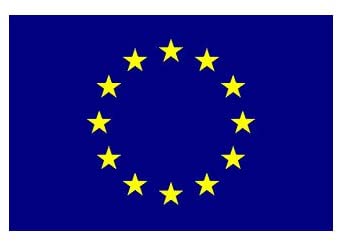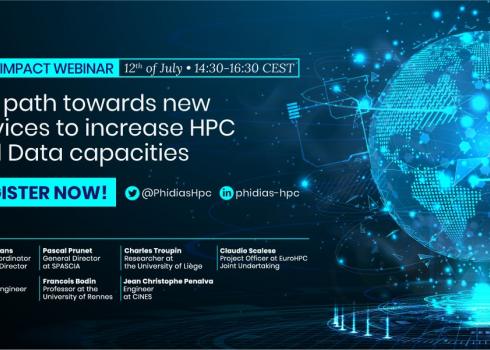USE CASE 1 - Intelligent screening of large amount of satellite data
![]() Environmental satellite data are gradually becoming key in helping build an understanding of the changing environment and a new engine of scientific discovery.
Environmental satellite data are gradually becoming key in helping build an understanding of the changing environment and a new engine of scientific discovery.
PHIDIAS has set up a data area testing case in "Intelligent screening of a large amount of satellite data for detection and identification of anomalous atmospheric composition events". The intelligent screening of a large amount of satellite data is associated with the Earth sciences, data-derived and integrated from Earth observation, as well as terrestrial, oceanic and atmospheric data, together with data on human activity, obtained from ground sensor networks and other sources.
The corresponding activities are mainly led by SPASCIA, together with its partners such as ICARE (Sentinel 5 Precursor, Data access, data provider, formatting ad architecture), HYGEOS (Level 1 data processing for extreme events), and SRON (Expertise on S5P data and products, Scientific pilot user). SPASCIA is bringing to the PHIDIAS project the thematic of atmosphere in order to provide information related to extreme events on climate or pollution impact.
Challenges
Environmental satellite data are gradually becoming key in helping build an understanding of the changing environment and a new engine of scientific discovery. The intelligent screening of a large amount of satellite data is associated with the Earth sciences, data-derived and integrated from Earth observation, as well as terrestrial, oceanic and atmospheric data, together with data on human activity, obtained from ground sensor networks and other sources.
“The challenge is to be able to use a huge quantity of data to extract the correct information to the users for the pollution events and climate issues.” - Pascal Prunet, SPASCIA, Use case 1 leader
Solutions
The use case on “Intelligent screening of a large amount of satellite data for detection and identification of anomalous atmospheric composition events” aims to use HPC and high-performance data management services for the development of intelligent screening approaches for the exploitation of large amounts of satellite atmospheric data in an operational context, implementing a prototype service on the already available Sentinel 5 Precursor (S5P) European atmospheric sounding mission.
Work has been initiated by SPASCIA, in coordination with ICARE, to select and obtain a sample of the S5P L2 product, and to start the analysis of the corresponding images.
This allows the preparation of necessary inputs or test data for the development of the processing algorithm of the L2 S5P products (2nd L2 intelligent screening approach of S5P data, for the detection and characterisation of pollutant plumes). ICARE has implemented and is processing the archiving of S5P data and products on the ICARE facilities for PHIDIAS. Several exchanges between SPASCIA and ICARE have allowed the organisation of a complementary relationship between scientific and IT actions in Use Case 1 and setting up the basis for data exchanges and computing resources.
An algorithm for detection of NO2 hotspots of pollution sources has been implemented and evaluated (previous work already presented) and has been passed to ICARE team, who is embedded the processing software into a framework adapted to PHIDIAS objectives, for portability, robustness and optimized processing on HPC facilities. SPASCIA is adapting the source detection algorithm to another pollutant provided by S5P level 2 (L2) product : the CO. This is challenging because the detection of pollution hotspots of this gas is less evident (less contrast between pollution plume and atmospheric background concentrations), and the quality and maturity of the product is not the same as NO2.
ICARE is performing tests and preparing the implementation of this first WP4 processing on CINES infrastructure.
SPASCIA and HYGEOS are developing and debugging the second axe of our WP4 S5P data processing, aiming at performing extreme event detection directly from raw measurements of S5P/TROPOMI (the so-called Level 1 (L1) spectra). We are facing difficulties for a proper use of the L1 data, and we are working hard (with support from SRON) to deal with several issues on our use of the data for their processing by our detection algorithm. This is ongoing.
Learn more about the PHIDIAS use case 1 "Intelligent screening of large amount of satellite data"
Events/Webinars:
- EO4GEO WEBINAR ON 27TH OF JULY 2021: NEW GENERATION SKILLS OF WORKFORCE WORKING WITH GEOSPATIAL DATA
- PHIDIAS: Steps forward in detection and identification of anomalous atmospheric events
- PHIDIAS HPC – Building a prototype for Earth Science Data and HPC Services
News:
- The impact of COVID-19 on air quality in urban areas
- Improving efficiency and genericity of the intelligent screening of environmental satellite data
- How COVID-19 is impacting on pollution levels over European cities
- Highlights & Takeaways: PHIDIAS webinar on Intelligent screening for satellite data Use case
- Webinar “PHIDIAS HPC – Building a prototype for Earth Science Data and HPC Services”
- PASCAL PRUNET, PHIDIAS HPC Kick-Off Meeting Interview





